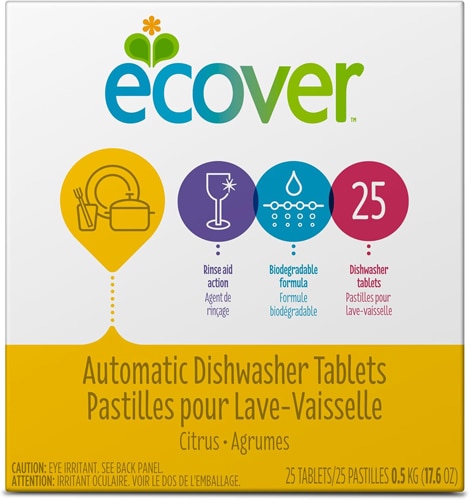You may think you know all the usual places where germs like to hang—the toilet for one, as well as those pesky sponges that are so difficult to disinfect completely. But there’s a fair amount of places the germs like to congregate that may take you by surprise.
I know I was not only surprised, but mortified.
Every story one writes contains an implicit call to action. Some of those calls to actions are easy to ignore, others—not so much. Full disclosure that in writing this story I often had to stop and immediately put into practice some of these tips, such as disinfecting my washing machine by running it through with bleach. Read on to discover some of the germs you have been inadvertently hosting, and be forewarned that you might have to declare war on them before you even finish this article.
Germ Hotspot #1: Washing machines
Although we think of our washing machine as a hotbed of sanitization, it may be contaminating your clothing and linens. Some of this is the rise of using cold or warm water for loads instead of hot, and shorter, eco-conscious washing cycles. For loads with lots of underwear, which can contain approximately 100 million E. coli (and can then cross-contaminate the next load of laundry), it might be prudent to do some loads with hot water—at least once in a while. But sometimes it’s hard to reconcile the urge to germ-bust with the urge to reduce our footprint and I struggle with this issue myself.
Clean it tip: Clean your washing machine with bleach and water without any clothing in it and just let the machine go through its regular cycle. (Doing this as write.)
Germ Hotspot #2: Towels
Towels, which are moist and damp, make for a perfect bacteria breeding ground.
Sharing towels can spread MRSA, a dangerous staph infection that is resistant to many antibiotics. Also alarming: acne-causing bacteria can also be spread among family members from towel sharing.
Clean it tip: Make sure towels air out quickly after each use. If you don’t have a rack or hooks, consider spreading them out over a stand-up or wall-mounted rack. You can also line dry towels in the sun, weather permitting, or put a load of towels in the dryer after everyone has bathed and showered. Finally, every once in a while launder towels in hot water and bleach. If they still smell mildew, may be time to buy some new towels. Don’t forget to include your hand and face towels, which are equally suspect.
Germ Hotspot #3: Oven Knobs
Somehow oven knobs seem relatively innocent of germs, but according to recent research from NSF International, a public health organization, 14 percent of knobs had coliform bacteria, while 27 percent harbored molds and yeasts.
Clean it tip: Weekly or at least monthly, remove the knobs and wash in hot, soapy water.
Germ Hotspot #4: Cutting boards
Researchers at the University of Arizona found that in the average household, cutting boards have 200 times more fecal bacteria that the average toilet seat. Yikes!
The study also showed that 18 percent harbor potentially dangerous coliform bacteria and 14 percent contain molds and yeasts.
Clean it tip: After every use, place boards in the dishwasher or hand-wash with hot soapy water. If your cutting board is very scoured, it may be time to replace. Germs, apparently, just love to nestle in those tiny grooves.
Germ Hotspot #5: Refrigerators
The erroneous assumption regarding fridges is that bacteria won’t grow in cold temps. Not true. A recent study in England found fridge salad drawers, for example, can contain 750 times the level of bacteria considered safe. But scrubbing the inside of your fridge isn’t enough. The University of Arizona study also found that of 160 homes in three US cities, the seal around the fridge tested positive 83 percent of the time for common molds. The mold can spread every time the refrigerator door opens—potentially contaminating the food.
Clean it tip: Do a weekly fridge wipe-down and a once-a-month deep clean where you take everything out, toss any spoiled food, wipe down all surfaces and scrub removable shelves in sudsy hot water. Don’t forget to wipe those fridge seals with a diluted bleach solution or disinfectant too.
Germ Hotspot #6: Computer keyboards
Get ready for it: There are about 200 times more bacteria on a keyboard than a toilet seat—possibly because we never think to disinfect our keyboards.
Clean it tip: Wash your hands, and your desk area, and keyboard, often.
Germ Hotspot #7: Faucets
Since you can’t wash your hands before you turn on your faucet, it’s a logical though painful realization that research found coliform bacteria on nine percent of bathroom faucet handles and that 27 percent had molds and five percent carried staph. In another survey conducted by the Hygiene Council, kitchen faucet handles carried more than 13,000 bacteria per square inch and bathroom faucet handles had more than 6,000 bugs per square inch. This is much higher than other spots in your home.
Clean it tip: Clean faucet handles daily with disinfectant wipes or spray.
Don’t despair after reading about these sneaky germ havens—or become a fundamentalist germaphobe. Simply channel all that angst into spring-cleaning by putting a “I can” attitude into all that spick-and-span. Your house will gleam, and a lot of bacteria will find themselves homeless.




